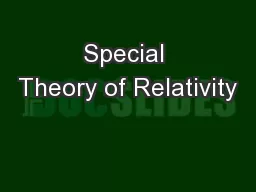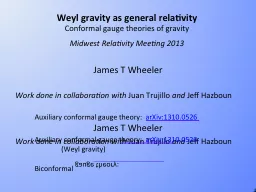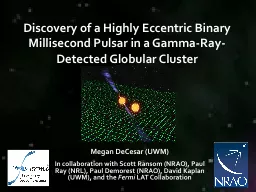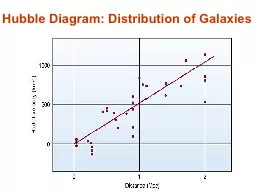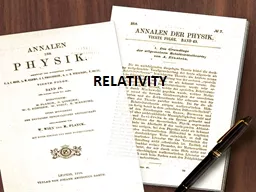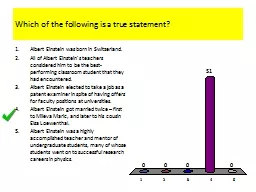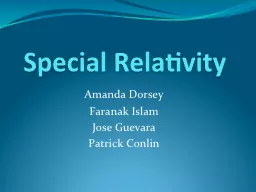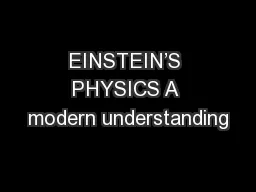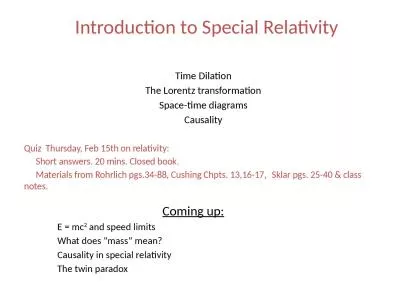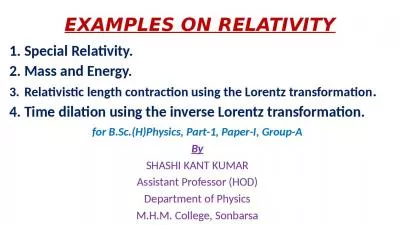PPT-Special Theory of Relativity
Author : min-jolicoeur | Published Date : 2018-03-16
PH101 Lec5 Geometrical properties of 3D space I magine a suitable set of rulers so that the position of a point P can be specified by the three coordinates
Presentation Embed Code
Download Presentation
Download Presentation The PPT/PDF document "Special Theory of Relativity" is the property of its rightful owner. Permission is granted to download and print the materials on this website for personal, non-commercial use only, and to display it on your personal computer provided you do not modify the materials and that you retain all copyright notices contained in the materials. By downloading content from our website, you accept the terms of this agreement.
Special Theory of Relativity: Transcript
Download Rules Of Document
"Special Theory of Relativity"The content belongs to its owner. You may download and print it for personal use, without modification, and keep all copyright notices. By downloading, you agree to these terms.
Related Documents

